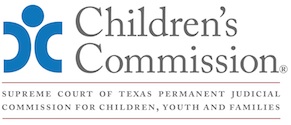C. Risk Factors
1. Indicators
Children and youth who run away or experience foster care are at a higher risk of commercial sexual exploitation.[272] According to the Office of the Texas Attorney General, potential indicators (or “red flags”) that a child may be a trafficking victim include:
• Changes in school attendance, habits, friend groups, vocabulary, demeanor, and attitude;
• Sudden appearance of luxury items — e.g., manicures, designer clothes, purses;
• Truancy (absence) from school;
• Sexually provocative clothing;
• Tattoos or branding;
• Refillable gift cards;
• Missing Events;
• Multiple phones or social media accounts;
• Lying about the existence of social media accounts;
• Inappropriate pictures posted online or stored on the phone;
• Unexplained injuries;
• Social interaction and schedule being strictly controlled by someone else; and/or
• Isolation from family, friends, and community.[273]
2. Screening
All children must receive a developmentally appropriate comprehensive assessment not later than the 45th day after the date a child enters the conservatorship of DFPS. The assessment must include a screening for risk of commercial sexual exploitation using a validated, evidence-informed tool selected by the child Sex Trafficking Prevention Unit established under Tex. Gov't. Code § 772.0062 if:
• Validation guidelines based on the child's age indicate the screening is appropriate; or
• Concerns of commercial sexual exploitation exist. Tex. Fam. Code § 266.012(a)(2).
The Commercial Sexual Exploitation Identification Tool (CSE-IT) is a tool used across the state to screen for commercial sexual exploitation. For more information, see the Office of the Texas Governor CSE-IT Tool[274] or Texas CASA CSE-IT Guidebook.[275]
Special Issue: The availability of the internet means trafficking can happen anywhere. Traffickers often use the internet, including social media platforms, to recruit and exploit child victims. Teaching youth in foster care about internet safety is a critical part of any effort to prevent and address human trafficking.
